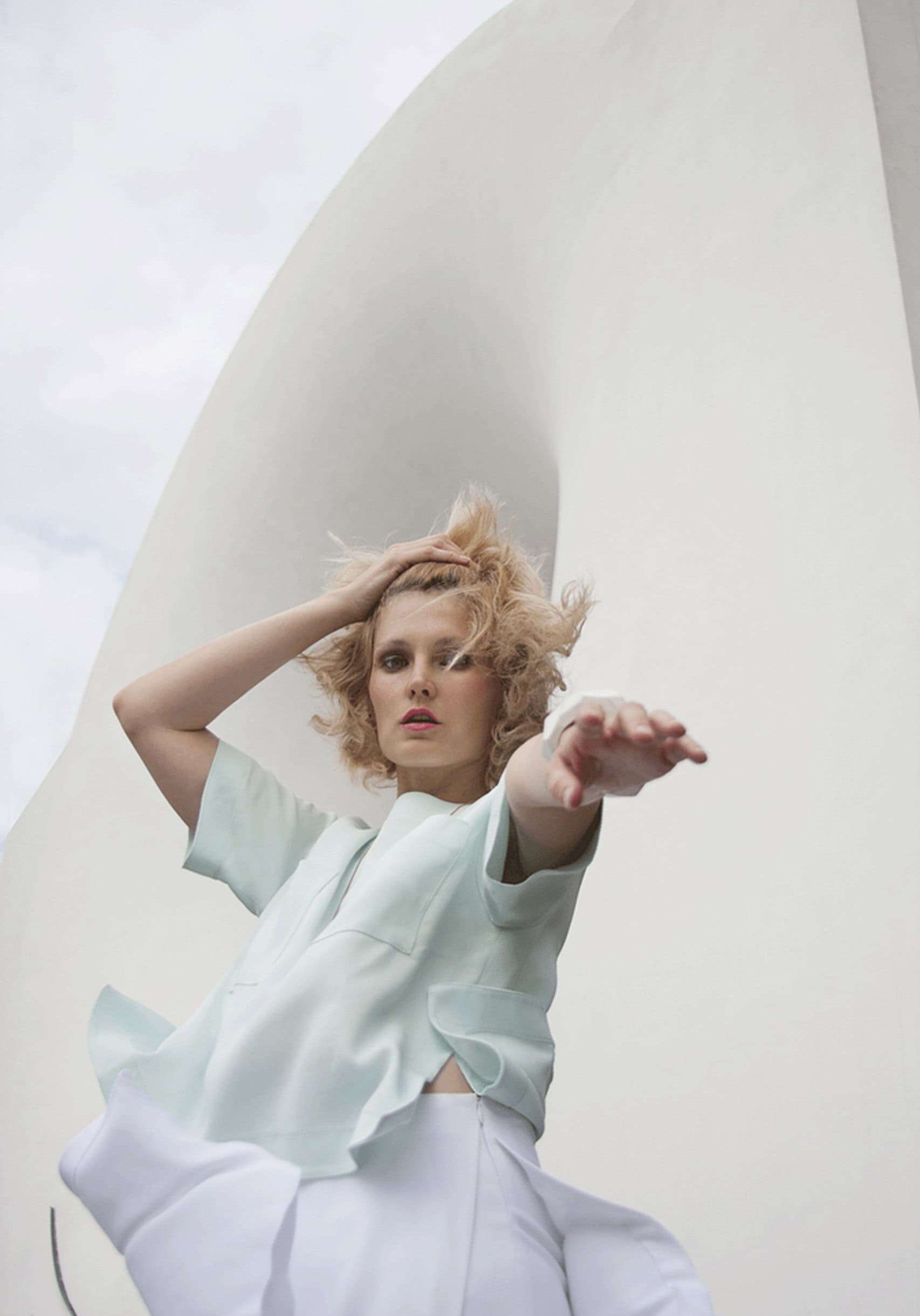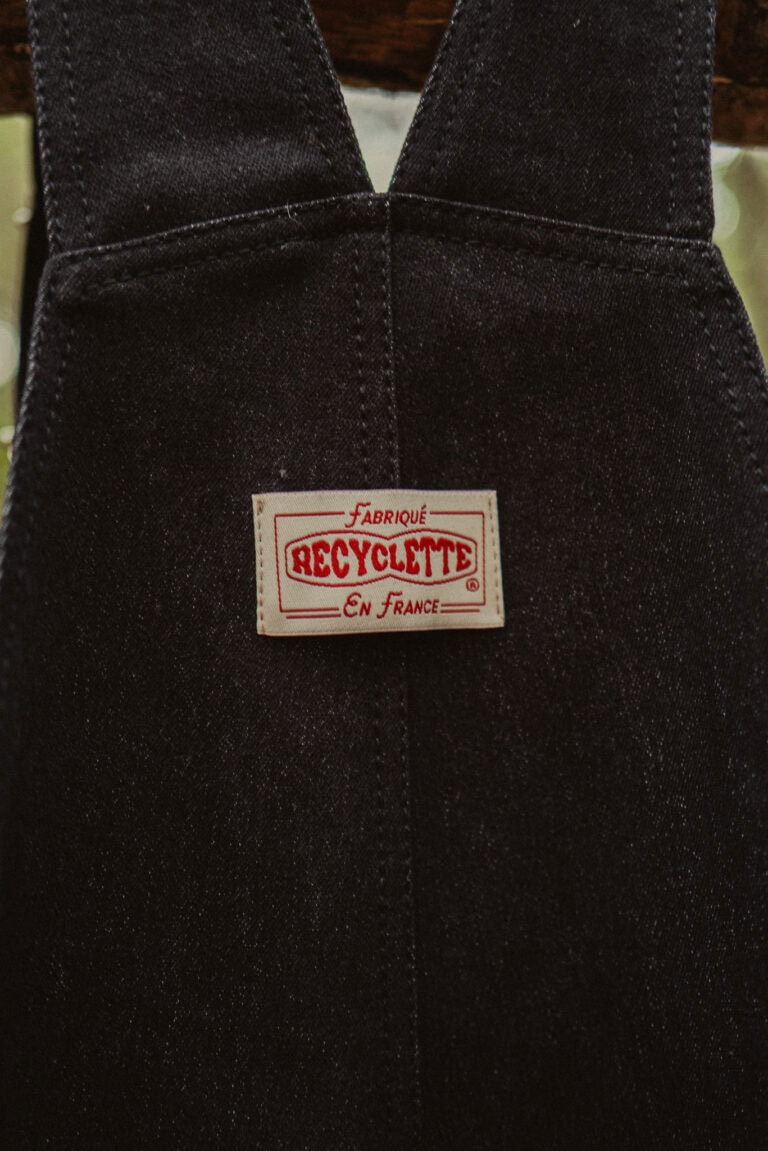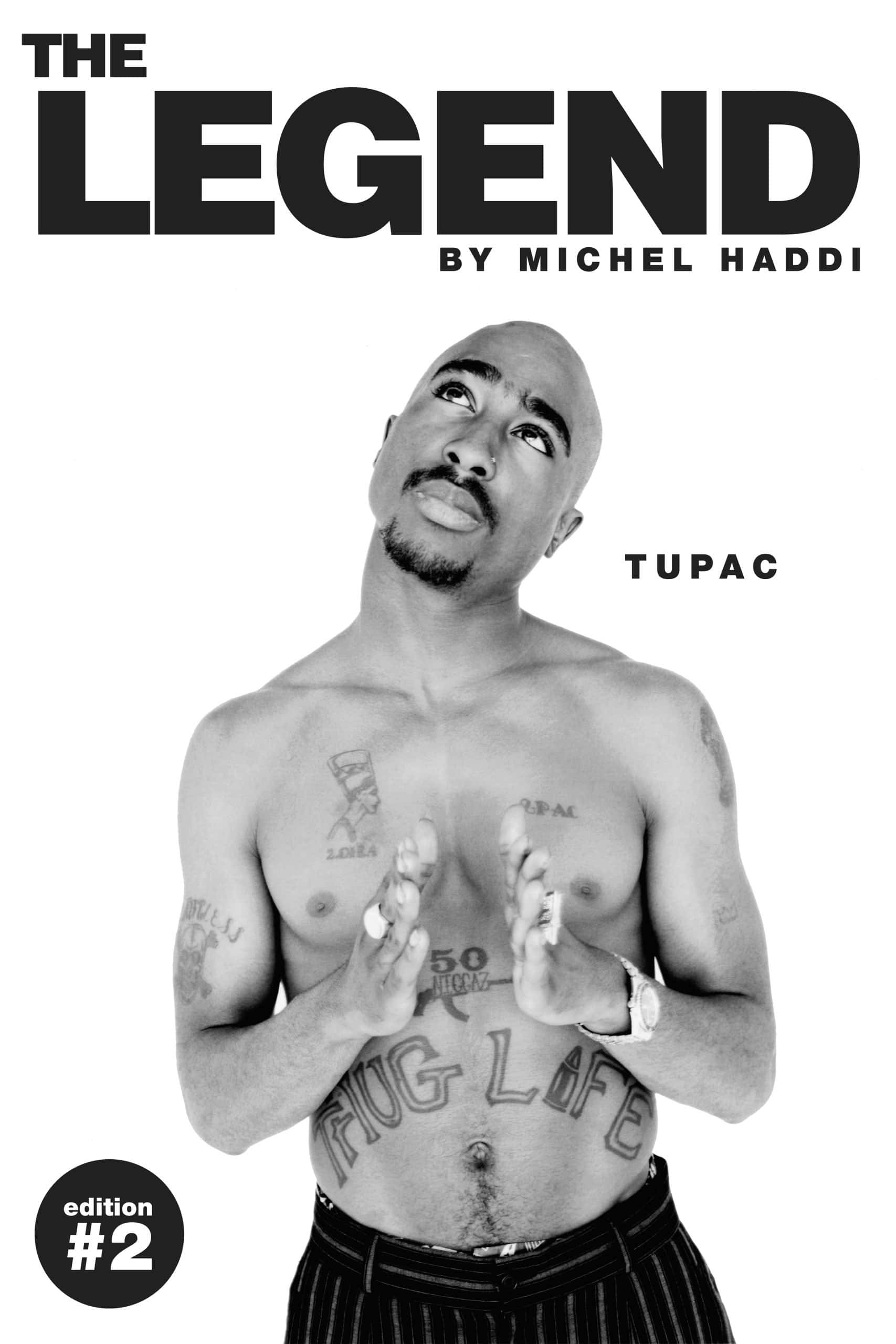
TUPAC THE LEGEND AN EXAMPLE FOR MILLIONS
Mia Macfarlane
Tupac Shakur was never just a rapper. “He was an example for millions,” Michel Haddi says. He became a cultural lightning rod who channeled rage and tenderness into verses that still feel urgent decades later. His life burned fast and bright, marked by contradiction. He could be fierce in one moment, reflective the next, a man who wrote poems about his mother and then unleashed anthems that rattled the status quo. He carried the burden of activism and the glamour of fame, always aware that both could become a target on his back.
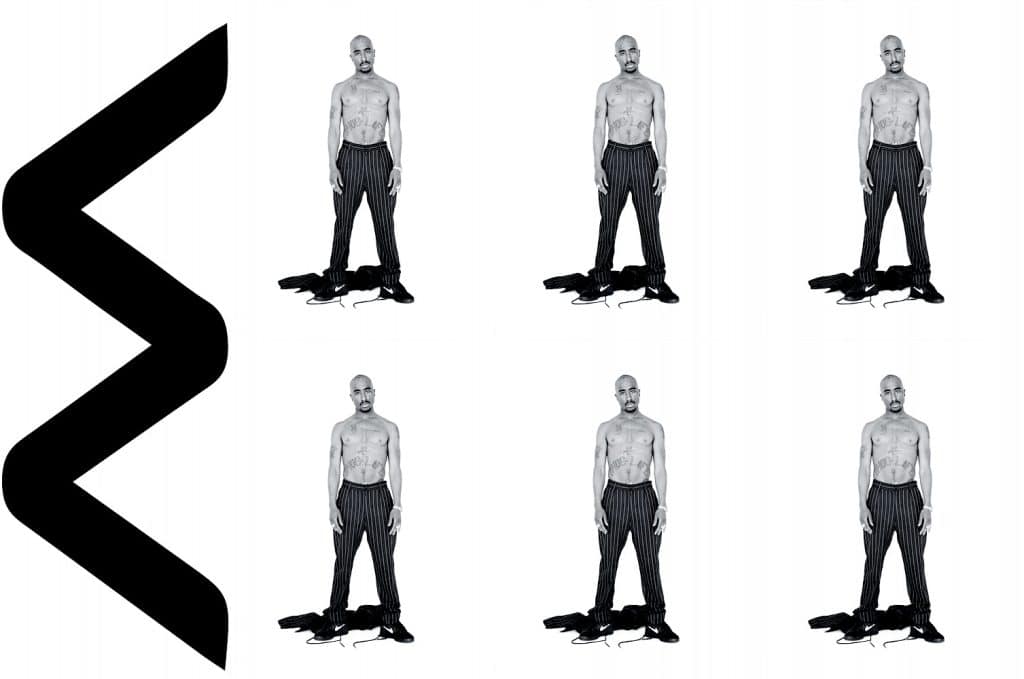
“In ‘The Legend Tupac,’ I wanted to show all of that,” Haddi explains. When he looked through his lens and saw Tupac with his eyes closed, serene, almost holy, he felt a premonition he couldn’t yet name. “Don’t ask me why,” he says now, “but he reminded me of Martin Luther King Jr.” The memory came unbidden, paired with an unsettling awareness that both men shared a destiny marked by violence. “All my life I have had premonitions,” he adds. “My mom is from a Berber tribe from Algeria, and my name in Arabic means ‘the one who sees whatever is behind.’”
More than a book, this project became Haddi’s testament to the complexity that made Tupac an icon. “First, he is Black,” Haddi says simply. “To put in the right light, beauty, and all, an African American is very important. They deserve a place in my pantheon of terrific and amazing artists.”
A Joyful, Chaotic Studio
The day of the shoot felt joyful in its own unruly way. “Tupac arrived with the biggest blunt I had ever seen,” Haddi laughs, and music flooded the studio in waves. The atmosphere buzzed with possibility. “He enjoyed the whole shoot,” Haddi recalls. “He was a good soul, ready to do anything I asked.”
John Singleton, already a revered director, tried to commandeer the session, but Haddi wouldn’t let the vision slip away. Even amid the bustle, Tupac slipped into a quiet composure every time the camera lifted. “He was a quiet one, not much into conversation,” Haddi says. “I suppose when two artists meet, they don’t speak much, as they are doers and not talkers.”
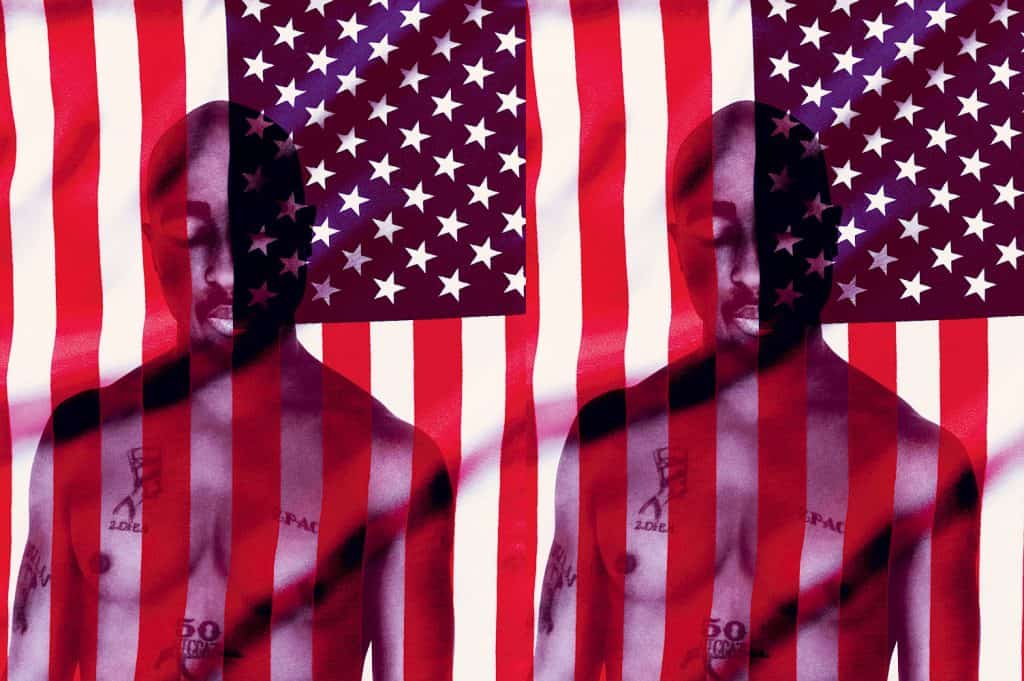
A Presence That Defied Labels
Tupac’s ease came from experience. He had worked with some of the era’s most renowned image-makers, including David LaChapelle and Albert Watson, and he moved with a practiced fluidity. Haddi didn’t see just another celebrity angling for attention. He saw an artist unafraid of vulnerability, someone who could slip between performance and introspection without losing authenticity.
“I have respect for artists from all boards,” Haddi explains. “Maybe I am lucky for this. I feel at ease working with all these great artists and always finding the little thing that will be different.” For Tupac, that difference wasn’t a single gesture or expression but the entire sequence, a series of moments that, stitched together, revealed something closer to truth.
“I never think, ‘this is the one,’” Haddi says. “Out of a sequence, if you manage it well, you will have the gem. But don’t get too attached, because maybe the next one will be grand.”
Fragments of Memory
Time has blurred some of the details. Michel Haddi doesn’t remember exactly what Tupac wore, maybe a hat, certainly that suit. But he remembers the feeling, the charged sense that this was a portrait of someone already becoming legend. Between shots, they spoke about Martin Luther King Jr., about Haddi’s own neighborhood, which he is certain was as rough as Compton.
Years later, when he revisited the contact sheets, Haddi felt struck by how Tupac resembled a statue of Julius Caesar, a Black Roman consul with a gaze that transcended centuries. “It surprised me,” he admits. “In some images, he looked so timeless.”
“The Legend Tupac” as Iconic as Its Subject
That timelessness inspired “The Legend Tupac,” not just as a book but as a tactile object measuring 45×30 centimeters and wrapped in luxury Galerie Art papers. Each of the 500 copies carries Haddi’s signature and a unique number. Collectors can frame individual pages as artworks, curating their own experience of Tupac’s legacy.
“So many people loved Tupac, the young and the old,” Haddi says. The first edition sold out quickly. For the second and final edition, creative director Roberto Da Pozzo reimagined the cover to underscore the belief that books can feel as singular and precious as an Hermès bag. “I believe the future of books and magazines has to be special, rare, like luxury goods,” Haddi explains.

A Legacy That Endures
“One thing I learned,” he reflects, “if you start to do personal projects, you need to put in everything you loved that other publications won’t let you do. I suppose it is an ego trip. Who cares? People can say what they want. Only the future will tell if I am right.”
When asked what he hopes this book will impart to the generations discovering Tupac through old records or viral clips, Haddi doesn’t hesitate. “Enjoy, and think what you can do for yourself, and think about who you are,” he says. “He is an example for millions.”
For Haddi, this project deepened his connection to Tupac’s story. It isn’t just about documenting a moment in pop culture but about honoring the beauty and complexity of an artist who still defies every attempt to pin him down.
In these images, Tupac isn’t frozen in the past. He is still becoming a revolutionary, a poet, a legend whose spirit endures.
Share this post
One day when I was barely two my mom let me push her out of her bedroom. She was curious so she ran outside the house so she could watch me through the window. I climbed up on a chair by her vanity and started putting on her makeup. I loved playing dress up as a kid. Putting on my mom's sequin tube tops and high heeled shoes and then putting on a dance show in the lobby or the restaurant of the hotel/residence we lived in. It was the best childhood ever. Dress-up, dancing, playing with barbies, and drawing were my favorite things to do. I have not changed one bit today. If I am creating I am happy.
Now I am in Paris for the second time in my life and I am having a ball playing with my partner in crime Julien Crouigneau. We founded IRK Magazine together in 2015 and we are proud to collaborate with some amazing artists, and influencers.
We are also a photography duo under the pseudonym French Cowboy. We love to tell stories and create poetic images that are impactful.
Read Next

